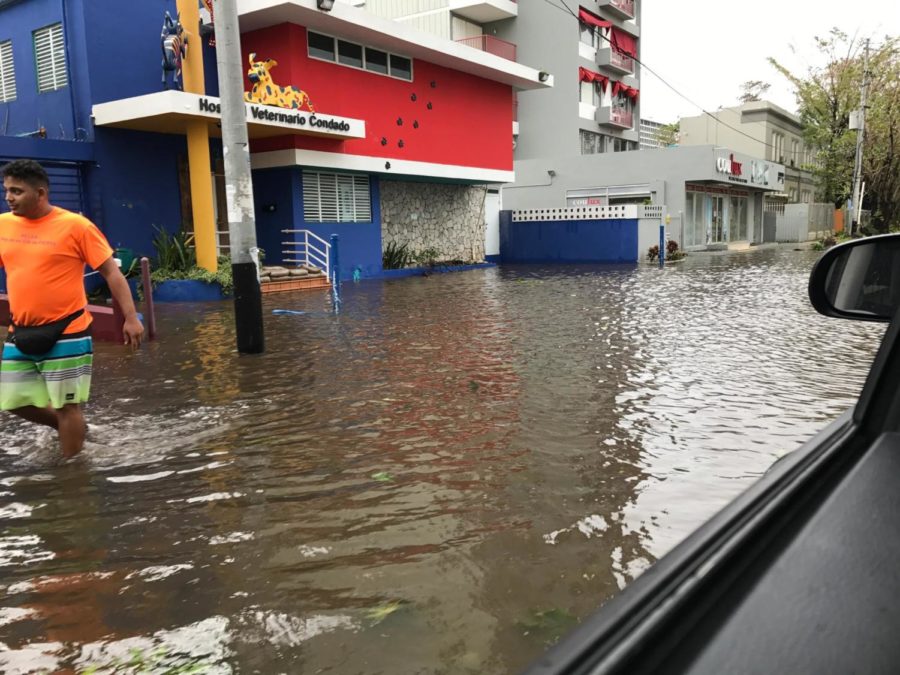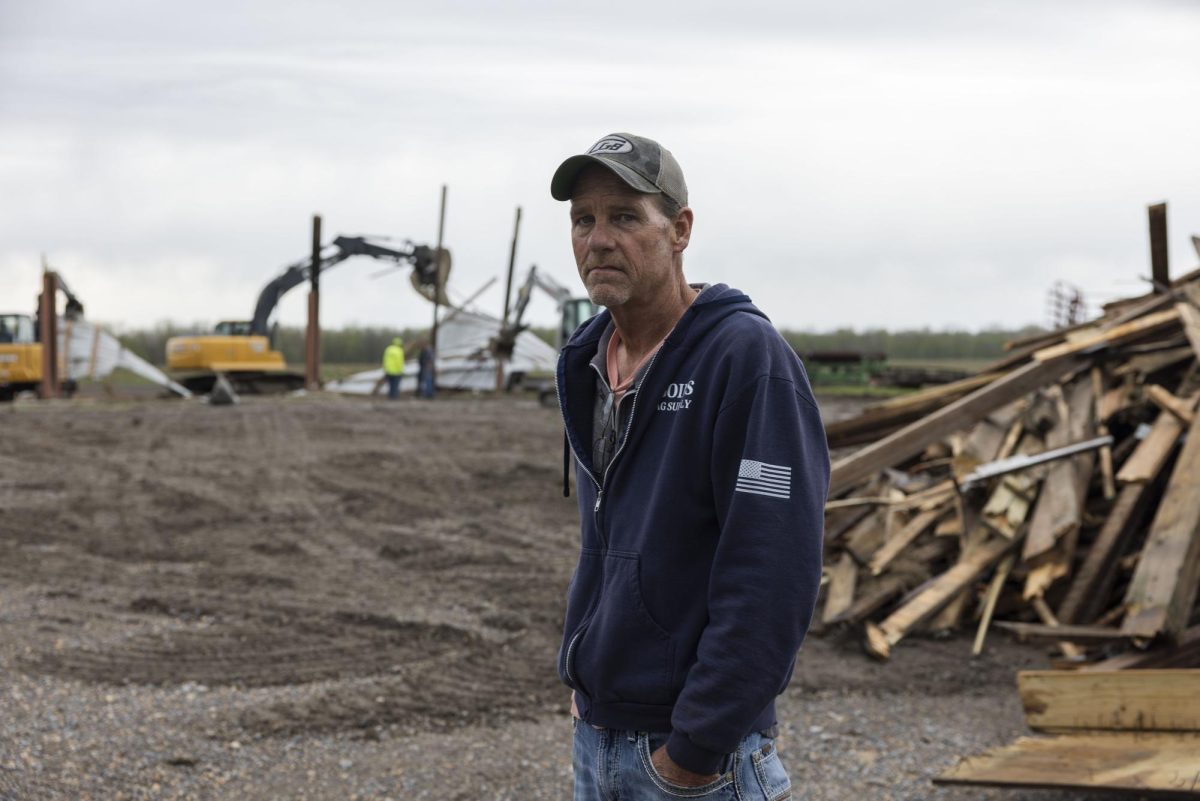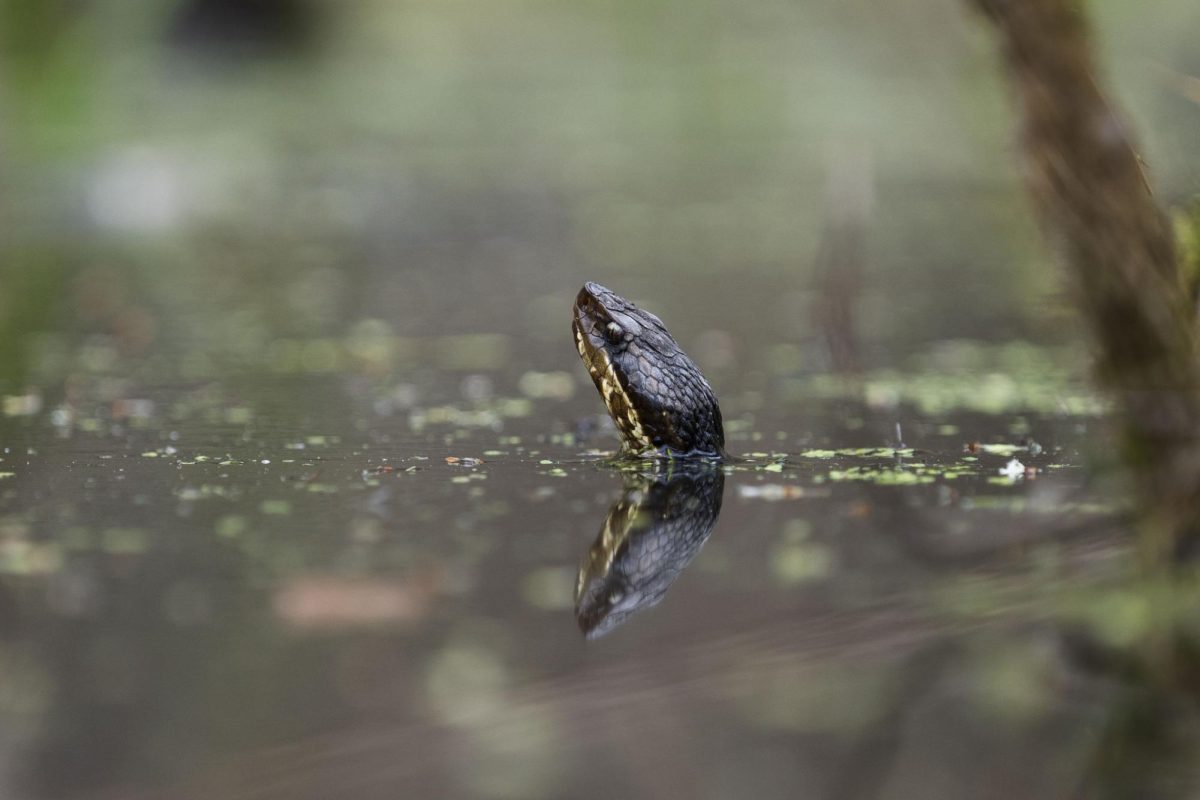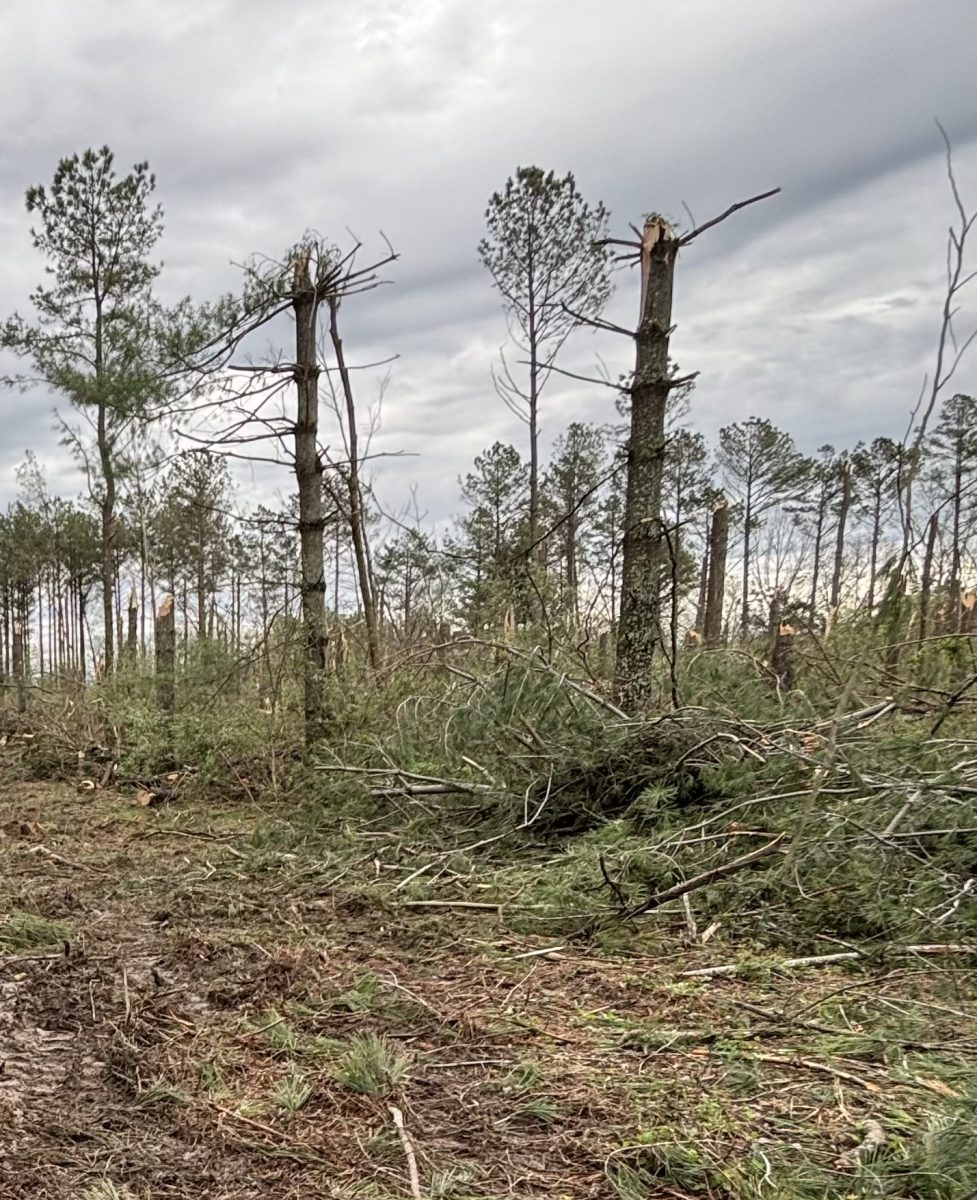SIU student reflects on the aftermath of Hurricane Maria eight months later
May 9, 2018
Since Hurricane Maria ripped through the United States territory Puerto Rico this past fall on Sept. 20 the island’s residents have been picking up the ruins of their homes and businesses while living with no power and water for months.
“The days were long and the nights were short,” Ivonne Franceschi, mother of SIU student Ivanna Garcia said. “I was sleeping on the balcony because there was no air conditioner so you could smell the pollution. Then you’d wake up with the sun about 5 a.m. with the mosquitos.”
Garcia, a junior studying Biological Sciences, came to SIU in January after living in Puerto Rico with Hurricane Maria’s aftermath for four months.

Ivanna Garcia, a junior studying biological sciences from San Juan, Puerto Rico, poses for a portrait on Tuesday, May 9, 2018 at the Daily Egyptian office.
At night the city Garcia and Franceschi live in, San Juan, was very dark only being lit by moonlight. Franceschi said she was without power for approximately 40 days.
During the first month and a half after the hurricane, Garcia said there was nothing anyone could do because everything was shut down including the power and water.
Garcia said she would wake up at 6 a.m. to wait in two or three-hour lines to get pints of milk and bread to eat for the day.
“There was this huge line because there was no power inside and they couldn’t let everyone in,” she said. “They let five people in at a time and the people had 20 minutes to shop for groceries.”
In the grocery and general stores, the majority of shelves were empty because the imported goods from the U.S. couldn’t be distributed to the Puerto Rican businesses, Franceschi said.
Franceschi, general store manager, said the majority of Puerto Rico’s imported goods come from Jacksonville, Florida which was hit before Hurricane Maria with Hurricane Irma.
The string of hurricanes delayed imported goods getting to Puerto Rico she said.
Once the delayed goods made it to the shipping yards in Puerto Rico there were no truck drivers to distribute the goods, Franceschi said.
“A lot of bridges were broken, you couldn’t go from one place to another,” Franceschi said.
When Puerto Rican residents wanted to travel with their cars or get fuel for generators, Garcia said people waited in gas lines miles long for as long as 24 hours.
Puerto Rico’s gas is imported from the U.S. and was limited after Hurricane Maria, Garcia said.
“There wasn’t a day where you wouldn’t see for miles and miles cars lined up in a gas line,” Garcia said. “That was horrible. That was one of the things I was impacted by.”
Garcia said she waited in a gas line for six hours to fill 20 dollars worth of gas.
Eight months after chaos ensued on the island Franceschi said on Tuesday it was announced the federal agency restoring power on the island would leave on May 18.
The United States Army Corps of Engineers’ contract will end in nine days, according to El Nuevodia, a Puerto Rican newspaper. According to the article, the Electric Power Authority is in the process of hiring three new companies to replace the 609 workers from USACE.
Despite the replacement of workers, the news brought confusion and worry to the island’s residents.
“Right now they’re leaving so a lot of people are worried, they don’t know what is going to happen because everything is in-between,” Franceschi said. “The job is not finished.”
Garcia said the worst part of Hurricane Maria was when she and her best friend went out from their metropolitan area, Guaynabo, and traveled around the island to asses the damage of the natural disaster.
“That was when it really hit me,” Garcia said. “All the trees were on the ground, everything was flooded and all the streets were closed.”
Hurricane Maria was the first hurricane Garcia had experienced. Garcia said she wasn’t scared until the wind blew off the shingled roof of her two-story house.
“Those got blown off by the hurricane, so all the water that was coming in started going in the house,” Garcia said. “So all of my house was flooded.”
During the hurricane, Garcia said she and her dog sought dry shelter in her elevated bathroom.
“I took all my quilts and put them on the bathroom floor and just laid there all night and slept there,” Garcia said.
Garcia’s elderly grandparents who she lived with at the time, took shelter in the downstairs bathroom as her dad and brother swept the water out of the house.
Garcia said her brother, her dad, and she took turns sweeping the water out of their flooded house while the hurricane raged on.
Franceschi said during the hurricane she was on the 14th floor of a high-rise apartment building.
The building Franceschi lives in is an old building with a strong structure built to withstand hurricanes. She said she originally chose to stay in the apartment during the hurricane thinking she would be safe.
“However, the winds started shaking and we started to get scared when we saw air conditioner units and different hurricane relief shelters flying right across our balcony,” Franceschi said.
After seeing air conditioner units and shelters flying across her balcony, Franceschi said she decided to go downstairs to the sheltered area.
“When we decided to do that it was probably too late because we could not open the doors because of the strong winds that would suck you in,” Franceschi said.
She said many people living in her apartment building stayed in their apartments and had trouble as water flooded their apartments and their windows shattered.
“They were very scared because it was too late for them to leave,” Franceschi said.
In the mountainous area of Puerto Rico, Garcia said the hurricane shattered windows in buildings and houses fell to the ground.
Families with small children were left with nothing after the hurricane blew through Puerto Rico, she said.
“So we went out there gave food, gave clothes, everything we could give them,” Garcia said.
Franceschi said originally Hurricane Maria was considered a category four hurricane, but now officials are changing the story saying the storm was a category three hurricane with tornadoes.
Franceschi said it was the first time it felt like Puerto Rico had been hit by a tornado.
“I had never felt that before,” Franceschi said.
According to an article by Vox, it was as if a 50- to 60-mile-wide tornado raged across Puerto Rico, like a buzz saw.
Hurricane Maria was the fifth-strongest storm to hit the United States, Garcia said. The New York Times reported at least six people died during the storm.
Garcia said her community was one of the first communities to be rebuilt after the hurricane because of the tourist attractions and government buildings. She said although the metropolitan areas are being rebuilt, the worst parts of Puerto Rico are still in ruins.
“Everything you see in the news right now, it’s like ‘oh Puerto Rico is getting better, look at this, look at that,’” Garcia said. “But they’re not really showing the worst parts of Puerto Rico which are not the metropolitan areas. It hasn’t gotten better, there’s a lot that still needs to be done here.”
Garcia said after Hurricane Maria hit her home, her life took a turn in a direction she would’ve never expected.
“I hope people get knowledge of what really could be going on in a hurricane – how their lives could change,” Garcia said. “You take everything for granted until you go through something like this.”
Garcia said before Hurricane Maria, she never expected to attend school in Carbondale.
She decided to finish her fall semester in December 2017 after being out of school for about four months. The University of Puerto Rico suspended classes after Hurricane Maria until October 30.
Classes began again while the school had no power. Garcia attended the university before coming to SIU.
“We were taking classes in the grass or outside the classrooms,” Garcia said. “The teachers were teaching using handmade blackboards.”
Teachers made homemade blackboards by taping paper together across the board and writing on it Garcia said. Since the semester had been delayed, she said the professors were teaching quickly so students could finish on time.
“It was hard on all of us because we were trying to keep up,” Garcia said. “That’s when I decided, I’m not going to stay here and risk my education for this.”
Although Garcia was able to continue her education this spring semester, she said she will be moving back to Puerto Rico by the end of May because of the financial burden of attending SIU.
Garcia said she thought she would receive more financial aid than she did. The university offered no hurricane relief besides a work-study program, which had no open positions. Her application was turned in late preventing her from receiving any scholarships.
“It was hard coming over here with all the damages at home,” Garcia said. “I’m paying for it all myself because none of my family can support me right now.”
As Garcia has lived and studied in Carbondale she said she reads the journal she kept while living in the middle of Maria’s destruction.
“Something I wrote in my journal was, something we don’t think much about, but how good a warm meal feels or drinking cold water,” Garcia said. “You appreciate everything more.”
Garcia said the donated goods and support did get to Puerto Rico. She said the territory was thankful for all the help and support.
When Garcia says she is from Puerto Rico, she said not many people think about the recent natural disasters.
“People still need to know what is going on even after all these months,” Garcia said. “It’s been a journey.”
Campus editor Amelia Blakely can be reached at ablakely@dailyegyptian.com or on Twitter @AmeilaBlakely.
To stay up to date with all your southern Illinois news, follow the Daily Egyptian on Facebook and Twitter.








